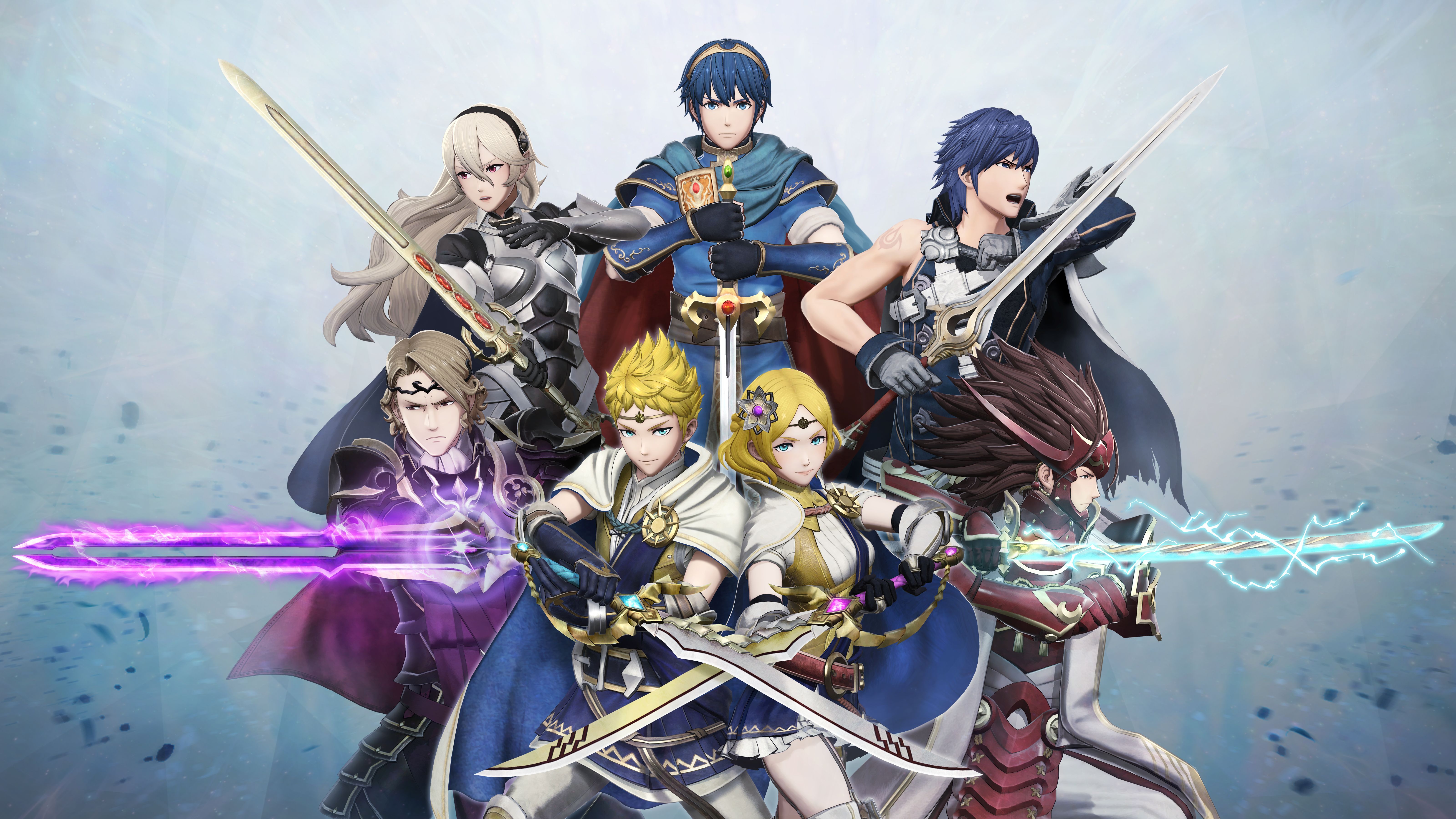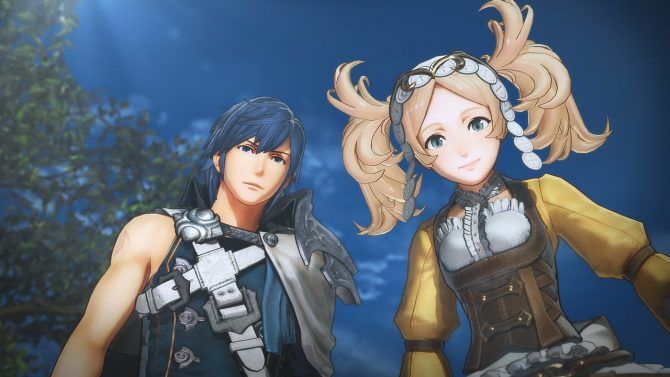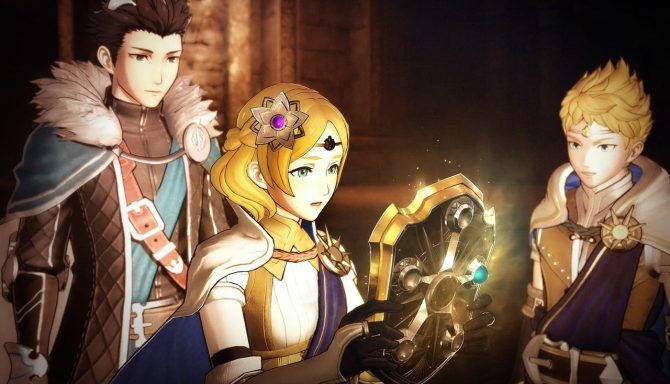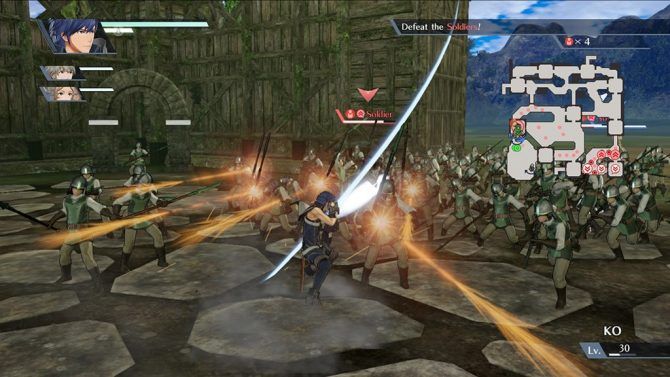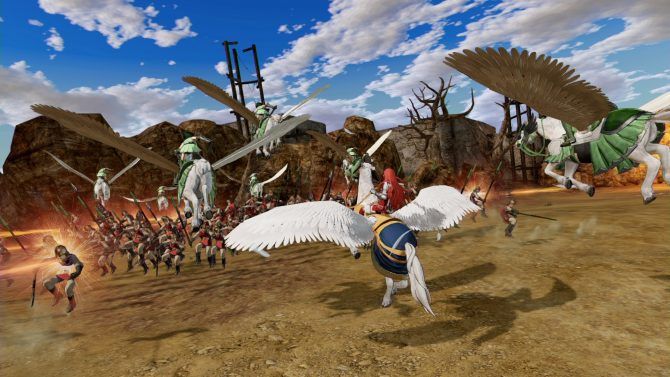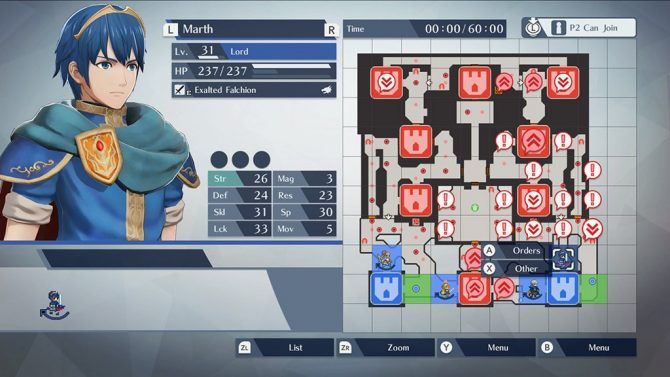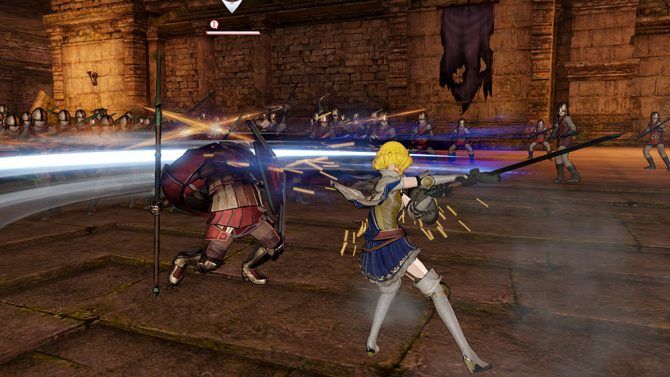I remember eagerly anticipating Hyrule Warriors from the moment it was first announced. As a fan of both The Legend of Zelda series and the occasional Dynasty Warriors title, I couldn’t wait to see a more action-oriented take on the series. When I finally got my hands on the game, I wasn’t disappointed; I found the gameplay loop intensely satisfying and thought that The Legend of Zelda series helped spice up the typical Warriors-like Musou formula. After playing Hyrule Warriors, I was eager to see another Nintendo/Koei Tecmo collaboration. Lo and behold, I got it with Fire Emblem Warriors.
Fire Emblem is another Nintendo IP that I thought would be a good pick for a Warriors game, so I’m glad the developers felt the same. I was first introduced to the series with Fire Emblem: Shadow Dragon; after playing that, I picked up many of the past games and have beaten every Fire Emblem title since the series’ resurgence. More importantly, I hoped Fire Emblem Warriors would bring the Fire Emblem franchise to a somewhat different genre, while still retaining some of the same elements and flair that make it enjoyable in the first place.
Fortunately, Fire Emblem Warriors stuck the landing and can splice some distinct Fire Emblem mechanics into the typical Warriors game, keeping things fresh for both series. While the mediocre voice acting and story could turn off some people who aren’t as well acquainted with the genre or either of the series, Fire Emblem Warriors is a worthy addition to the Nintendo Switch lineup of any fan of Musou games, Fire Emblem, or Hyrule Warriors.
[pullquote]Fire Emblem Warriors is a worthy addition to the Nintendo Switch lineup of any fan of Musou games, Fire Emblem, or Hyrule Warriors.[/pullquote]
To address the elephant in the room first: Yes, Fire Emblem Warriors’ main story mostly pulls its characters from Fire Emblem Fates, Fire Emblem Awakening, and Fire Emblem: Shadow Dragon. That being said, Celica from Fire Emblem Echoes: Shadows of Valentia and Lyndis from Fire Emblem: The Blazing Blade are outliers at this time. While I would’ve liked to see more characters pulled from older games (for instance, Path of Radiance and the like), the characters chosen were great picks from their respective games.
While Fire Emblem Warriors' gameplay can also feel a little sword heavy and “same-y” at times, I would attribute that to the fact that most of the main characters in the recent Fire Emblem series are sword wielders. That being said, there are still quite a few ax, lance, bow, and magic users in the lineup to keep things fresh and “Switch” (snap) to if a change of pace is needed. More variety would’ve been nice here, but I am still glad about what we got, as I get to see many of my favorite characters from more recent Fire Emblem games fully realized in an HD 3D environment alongside beautiful cutscenes.
As with most crossovers, Fire Emblem Warriors needed an excuse to bring multiple characters from a variety of games into the same world and did so with tepid results. The main plotline focuses on Rowan and Lianna, a Prince and Princess from the Aytolis Kingdom, as their homeland comes under siege from an evil dragon Velezark and evil enemy kingdom. This mayhem has also caused heroes from previous Fire Emblem games to be transported to this world, so Rowan and Lianna gather a ragtag group of heroes to stop the malevolent Velezark.
While the main plotline is serviceable in bringing these characters together and allowing for some neat re-enactments of famous scenes from previous games, it wound up being quite a cliche and disappointing. I had a massive grin on my face when Chrom and Lucina re-enacted their famous fight in the arena from Fire Emblem Awakening, but that scene was immediately followed by uninteresting dialogue and some weak voice acting.
[pullquote]" I had a massive grin on my face when Chrom and Lucina re-enacted their famous fight in the arena from Fire Emblem Awakening...."[/pullquote]
The story falls into tons of tropes when bringing these characters together, like the casual misunderstanding that causes a fight and the obvious betrayal. While it’s neat to see some of my favorite characters in recent memory come together in pretty HD-cutscenes, the story I was experiencing was paper thin, and only served as a means to an end so these characters could come together.
The voice acting also garners mixed results. Fire Emblem Warriors did receive a full English translation, which is very rare for Warriors games. While I appreciate the gesture and wish more Japanese games would do this in general, the voice acting is quite sub-par. Characters will deliver their dialogue very robotically in cutscenes, and it rarely ever feels like they are emphasizing the right words during a sentence, which can result in some very weird line deliveries. The Japanese voices are also locked behind a 2GB download, so expect your Nintendo Switch’s limited internal memory to take a hit if you want a more natural sounding experience.
While the story does disappoint (which is unfortunate for a usually plot-heavy series), the gameplay helps to make up for it in spades. The main storyline does bring all of the characters to several unique locations that are fully realized, 3D versions of maps that are usually only seen from a top-down perspective in the games. Fire Emblem Warriors contains some cool level scenarios, whose standout moments include a fight within a Hoshidan temple and a level where you are fighting two armies at once.
At its core, the fundamental combat is quite similar to most other Dynasty Warriors games, though some unique elements are introduced. Players hack ‘n slash through thousands of enemies, building up combos with both strong and heavy attacks as they try to take over enemy forts on a large map or complete other level-specific objectives. Within battles, many side objectives will also pop-up that will accumulate additional bonuses and rewards for the player. These side objectives popped up often enough, so I never felt like I was stuck on one mundane task for too long.
This is just the tip of the iceberg though, as the Fire Emblem series brings some cool new mechanics to the table. Like in recent Fire Emblem titles, before players even begin the main story they are asked if they want to tackle it in Classic or Casual mode. In Classic mode, characters that die during battle can only be revived if players have the right amount of gold and materials, while they will just be resurrected after each battle in Casual mode. Players can also choose the amount of pop-up tabs and information they want to be displayed on-screen, so more casual players who just want to mess around in the story can tailor the game to do so.
Each character also has a “Warrior Special Attack,” which can be used once a meter is filled up to annihilate the dozens of enemies around the player or deal massive damage to more critical enemies. Each Warrior Special Attack is usually a minor callback to how each character acts in their respective games with their fighting animations and Warrior attacks, so series veterans will be pleased with some of the stuff they pick up on.
[pullquote]Smaller nods like these show respect for the series at a core level, and this respect is emphasized further through the more squad-centric gameplay.[/pullquote]
Players also have an “Awakening Gauge” that will slowly fill as they fight enemies -- once it's activated, characters receive a considerable power boost before ending with an ultimate attack when the meter runs out. Characters like Tiki even transform in this stage, with the aforementioned princess becoming a dragon. Players can also equip Vulneraries and healing staves to their characters to heal allies, which is a welcome feature in some of Fire Emblem Warriors’ more stressful moments.
The weapon triangle between swords, lances, and axes also carries over from the Fire Emblem series, as does pairing up units; support bonds and conversations; and the use of Master Seals to upgrade characters and give them significant stat boosts. Players can even run into Anna the Merchant during battle and purchase momentoes from her. Smaller nods like these show respect for the series at a core level, and this respect is emphasized further through the more squad-centric gameplay.
[pullquote]"...Fire Emblem fans like myself will undoubtedly enjoy watching Chrom and Marth work together to take a large batch of enemies with their powerful sword attacks."[/pullquote]
Players can usually bring eight characters into battle with them, and they can switch between four of them on the fly. Before each battle and during fights in the pause menu, players can give orders to their fellow heroes. This makes it much easier to take over other forts and complete side objectives during battles, even if you aren’t there as the player.
While the AI can act pretty dumb if it is left to its own devices, they usually had no problem completing these orders and helping turn the tide of battle. These commands also take place on a map somewhat similar to what is present in the mainline Fire Emblem games, which helps Fire Emblem Warriors feel like a justified and worthy addition to the series.
Pairing up units in battle was something introduced in Fire Emblem Awakening, and its usefulness carries over here. Two units on the field can be paired up at any time, resulting in a stat boost for the primary character, as well as access to dual attacks and Warrior Special Attacks. I’m sure that other Fire Emblem fans like myself will undoubtedly enjoy watching Chrom and Marth work together to take a large batch of enemies with their powerful sword attacks.
After each battle at camp, players can also upgrade their characters with different Crests made with materials they find on the field, unlocking new combos; passive skills and effects; and character exclusive skills that can only be constructed through items obtained by building up support relationships with other characters. Once players use a Master Seal and upgrade their character, they gain access to even more abilities and combos. This should please completionists or those planning on sticking with the game after the main story, which lasts around ten hours.
After beating the main story, players can continue to get these upgrades by playing the main story in Free Mode, or by tackling History Mode (which functions like Adventure Mode in Hyrule Warriors). The scenarios contained within History Mode are based on important levels from previous Fire Emblem games, like the opening Premonition “Invisible Ties” from Fire Emblem Awakening. Each enemy on screen serves as a separate challenge, tasking players with completing challenges like Time Onslaught, where players must attempt to take down as many enemies as possible within a time limit, and gives them a rating depending on how they performed.
This is where some more wacky situations pop up, so if you’ve ever wanted to beat up Lissa and Frederick as Chrom, here’s your chance. New characters and Master Seals are obtained through this mode, so players are encouraged to try it out either during or after they play the main story. Like Adventure Mode in Hyrule Warriors, this is where most players will likely put tons of hours into the game -- the mode seems to fit the bill to be that kind of mode.
[pullquote]"...Fire Emblem Warriors delivers with enjoyable gameplay that blends mechanics from both Fire Emblem and Warriors games into something unique and unlike anything else on the Nintendo Switch."[/pullquote]
Coming off of Hyrule Warriors, which didn’t have as much to pull from The Legend of Zelda’s gameplay mechanics, the developers seem to have gone full-force and integrated Fire Emblem as much as they could while still sticking to the core tenants of Musou Warriors games. As a fan of both series, I found the integration quite pleasant, with plenty to appreciate from both sides -- even if a couple of the older Fire Emblem games ended up getting ignored when it came to selecting the roster.
I found immense enjoyment in watching some of my favorite Fire Emblem characters fight hordes of foes in 3D, as it something we have never really gotten with the series before. While the game is let down a bit by mediocre AI and underwhelming voice acting and story, Fire Emblem Warriors delivers with enjoyable gameplay that blends mechanics from both Fire Emblem and Warriors games into something unique and unlike anything else on the Nintendo Switch. I hope Koei Tecmo continue this collaboration with Nintendo, either on sequels to Fire Emblem and Hyrule Warriors, or another IP like Xenoblade.
Fire Emblem Warriors
- Platform(s)
- Switch, 3DS
- Developer(s)
- Koei Tecmo
- Publisher(s)
- Nintendo
- Genre(s)
- Action RPG

